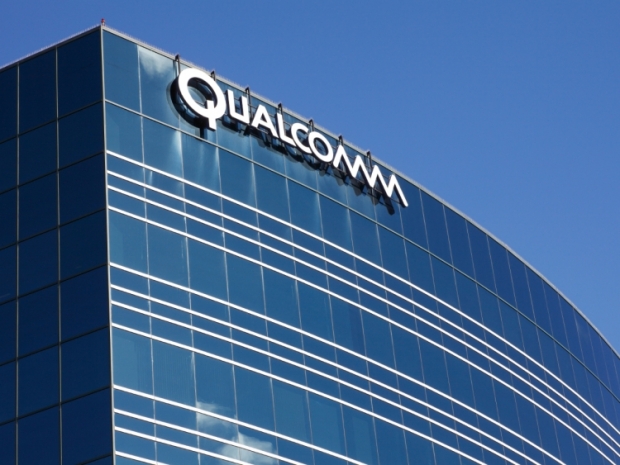The chipmaker forecast its fiscal 2019 first-quarter profit above analysts’ estimates, but the better than expected outlook was largely due to a one time tax benefit of about 45 cents per share.
Qualcomm is the world’s biggest supplier of chips for smartphones.
The Tame Apple press insists that Qualcomm’s woes are all because it did not obey Apple’s orders.
For those who came in late, Apple insisted that Qualcomm take a price cut for the honour of supplying its modems for iPhones. When Qualcomm told the fruity cargo cult to go forth and multiply, Apple refused to pay for chips it had used. As Qualcomm’s share price took a hit, Apple invested in a deal with Broadcom to take over the company.
Apple since kicked Qualcomm out of its iPhone range and saddled users with lower spec Intel modems.
Earlier this summer, Qualcomm warned its shareholders that Apple would make that move, but the impact has shown up more swiftly than Wall Street expected.
For Qualcomm’s fiscal first quarter that ends in December, the chip firm forecast revenue of between $4.5 billion and $5.3 billion and adjusted earnings of $1.05 to $1.15 per share. Analysts were expecting revenue of $5.57 billion and earnings of 95 cents per share, according to IBES data from Refinitiv.
Qualcomm Chief Financial Officer George Davis told Reuters that about half of Apple’s chip purchases tended to come during the holiday quarter. Davis said Wall Street analysts may have expected the blow from the Apple loss to be more spread out over the year.
“Our guidance has a reduction of over 50 million units in the quarter, all of that explained by the absence of being in Apple phones. That’s the difference.”
On the profit side, Davis said the adjusted earnings per share guidance of $1.05 to $1.15 included a 45 cent per share benefit from a tax restructuring that would not repeat.
Analyst Kinngai Chan from Summit Insights Group said that it is not a disaster: “I think Qualcomm can build from here on out with 5G and growth in its adjacent businesses” such as chips for automobiles.
Qualcomm has signed more deals with customers that effectively let them pay lower patent licensing rates. It has also reached new deals with large customers like Samsung.
It has also made new partnerships with Chinese mobile phone makers including Xiaomi, Oppo, Vivo and OnePlus, all of which offer lower cost models in emerging markets like India, where Apple has failed to make an impact.
Davis said those Chinese phone makers are increasingly making higher priced devices that use Qualcomm’s 700- and 800-series Snapdragon chips, which helped improve sales.
“Even though we made some changes to the licensing program that allowed customers to effectively have a lower rate, that came back to us in the form of higher (chip) unit sales”, Davis said.
Excluding items, Qualcomm earned 90 cents per share in its fiscal fourth quarter ended in September, beating analysts’ estimates of 83 cents, according to IBES data from Refinitiv.
Revenue fell to $5.80 billion for the fiscal fourth quarter but was still above estimates of $5.52 billion.
Qualcomm’s loss was $493 million in the quarter ended 30 September compared with a profit of $168 million, or 11 cents per share, a year earlier.




